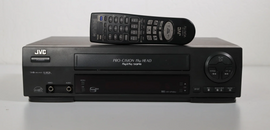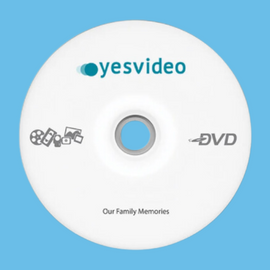
The VHS-C (Video Home System-Compact) cassette tape was a popular format for recording and playing back home videos in the 1980s and 1990s. Developed by JVC, the VHS-C cassette was a smaller version of the full-size VHS cassette, making it more portable and convenient for recording family events, vacations, and other important moments.
History of the VHS-C Cassette Tape
The VHS-C cassette tape was introduced by JVC in 1982 as a compact alternative to the full-size VHS cassette. At the time, camcorders were becoming increasingly popular, but they were often bulky and difficult to use. The VHS-C cassette was designed to be used with a smaller, more portable camcorder, making it easier for consumers to record and play back their home videos.
The VHS-C cassette quickly gained popularity and was used by many families to record important events and memories. However, it faced competition from other formats, such as Betamax and Video8. In the early 1990s, digital video formats like MiniDV and Digital8 were introduced, and they eventually replaced the VHS-C cassette as the preferred format for home video.
Technical Specifications of the VHS-C Cassette Tape
The VHS-C cassette tape was a smaller version of the full-size VHS cassette, with dimensions of 92mm x 62mm x 12.5mm. It used the same tape width (12.7mm) as the full-size cassette but was designed to hold up to 30 minutes of video in standard play (SP) mode and up to 90 minutes in extended play (EP) mode.
The VHS-C cassette used a similar tape formulation and recording method as the full-size VHS cassette. It recorded analog video and audio signals onto magnetic tape using a rotary head, which read and wrote the signals in diagonal tracks across the tape.
To play back a VHS-C cassette, a special adapter was required. The adapter was inserted into a full-size VHS cassette player or VCR, and the VHS-C cassette was inserted into the adapter. The adapter had a motorized mechanism that would spin the VHS-C cassette while the rotary head read the video and audio signals.
Picture of the VHS-C cassette & the adapter
The Role of the VHS-C Cassette Tape in Home Video
The VHS-C cassette tape played an important role in the history of home video. It allowed families to record and share important moments in their lives, such as weddings, birthdays, and vacations. The VHS-C cassette was also used by amateur filmmakers and videographers to create their own content.
The VHS-C cassette was an affordable and accessible format, making it a popular choice for consumers. However, it had some limitations, such as limited recording time and lower video and audio quality compared to digital formats. Additionally, the need for a special adapter to play back VHS-C tapes made it less convenient than other formats.
Despite these limitations, the VHS-C cassette tape remains a nostalgic reminder of a bygone era of home video. Many people still have VHS-C tapes in their collections. Wise consumers choose to convert VHS-C tapes to digital formats, like the MP4, so they can better enjoy the memories, for life.

